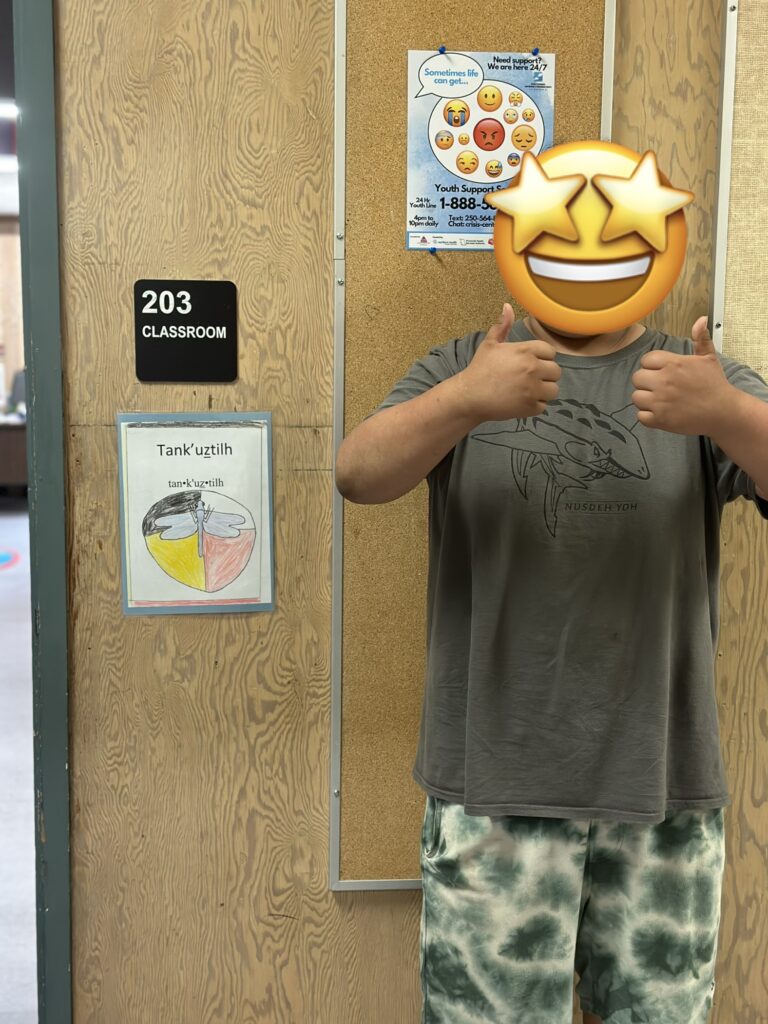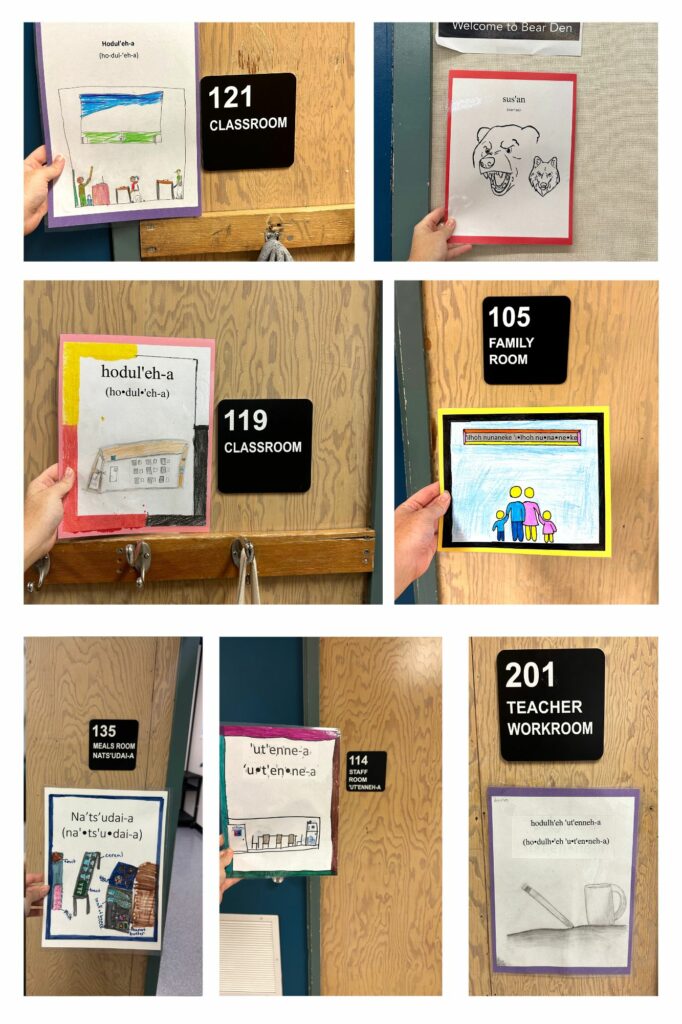Educators respect and value the history of First Nations, Inuit and Métis in Canada and the impact of the past on the present and the future. Educators contribute towards truth, reconciliation and healing. Educators foster a deeper understanding of ways of knowing and being, histories, and cultures of First Nations, Inuit, and Métis.

In the “My Story Tree” lesson, we gave the students an opportunity to explore, express, and share who they are, what they like and where they come from. In this, we asked the students to dive deeper into their identities. For example, each of the trees is the individual student’s hand/arm. The colour of the leaves that each student painted represents their favourite season. For example, yellow/red is for fall, blue is for winter, green is for summer, and purple is for spring. We then asked the students to paint a river behind their trees. In this part of the lesson, we had a conversation with the group about how although we come from different places all over the world we are currently residing on the unceded ancestral lands of the Lheidli T’enneh (where the two rivers meet). This is the place where the Dakelh Indigenous people are from, and the Dakelh people travelled by water and through the seasons, therefore the two rivers that flow through Lheidli T’enneh have significance and it is important for our youth to understand this. From there we asked out students to glue important people and places to the base of their tree as a part of their “roots”. From there we asked the students to choose characteristics about themselves (i.e. funny, kind, caring, etc.) and glue those to the branches of their tree (their fingers). We then had each student present their tree to us, in this presentation we asked them some questions such as Why did you paint a river behind your tree? What makes you think you are kind and caring? Can you tell me more about your tree? The goal of this was to get the students to think more about their identities as well as understand the significant influence of where they live has on their identity. With further discussions on how identity connects us to our history, culture, and traditions.
Although this is common knowledge, it is important to say and acknowledge the need to revitalize our local First Peoples language. At Nusdeh Yoh, around the school, there are signs that say what the room is in English and in Dakelh. To me, I found this as such a great way to incorporate the language into every day life of our students. I had noticed that there were no signs for every space, so as a project with my grade 6/7’s, we created signs. The students chose a place in their school that they wanted to create a sign for (even if the Dakelh word was already there, the students were able to make a sign). From there, they were taught how to use the Dakelh dictionary (http://www.billposer.org/LheidliCarrierDictionary/). Students then created their own posters for the space they chose. We talked about communication and how it is important to think about the many different ways we can communicate. Such as placing the English phonetic spelling under the Dakelh word. I also asked my students to draw something that represented the space. I did this because I asked them “If someone wanted to know what this space was but couldn’t read, how would they know?” Overall we talked about making the school community a welcoming place where everyone can feel as though they belong. Below are some photos of the posters the students created.




As a teacher I will always strive to:
- Continue my education and broaden my experiences (see below links to blog posts)
- Embed history, story, and identity into my lessons as well as the FPPL’S.
- Take advantage of opportunities for myself and for my students to further and enhance learning. I.E. Invite Elders, speakers, artists, etc.
- Embed place & land for experiential learning.
- Continue to always acknowledge the land which we live, learn, play, and teach on.